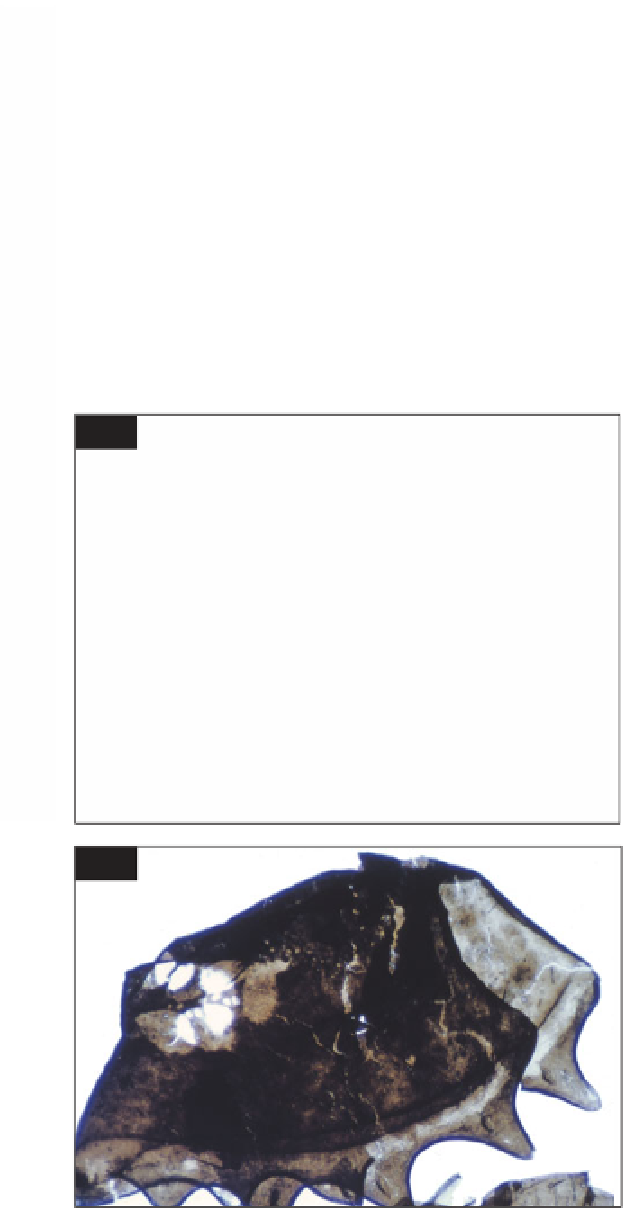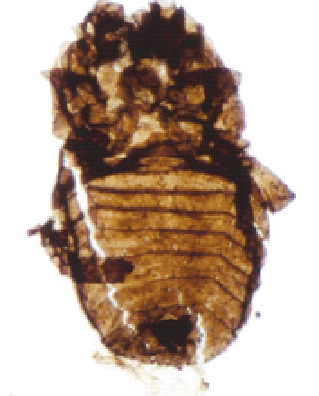Geoscience Reference
In-Depth Information
Scorpions
Some pieces of body segments and
podomeres attributable to scorpion have
been found at Brown Mountain and some
palpal chelae (claws) and pectines have been
found at South Mountain, though none of
these has yet been formally described.
early Devonian Rhynie Chert of Scotland
(Selden and Nudds, 2004, Chapter 5), but
their discovery in the mudstones of Brown
Mountain, Gilboa (Shear
et al
., 1984) was
first evidence of such early land
life in North America. The Rhynie
trigonotarbids are preserved three-
dimensionally in translucent chert, and
studies had already revealed their two pairs
of book-lungs - enclosed lamellate organs
for breathing air - which proved they were
terrestrial. The Gilboa material is extremely
flattened (
96, 97
), but looking at slides of
this remarkably well-preserved material
you get an eerie impression of how the
Trigonotarbids
These animals are very closely related to
spiders but differ from them in lacking
poison and silk glands, and are rather more
primitive in other ways. Trigonotarbids were
already known to be among the earliest land
animals since they were described from the
96
96 Nearly complete
trigonotarbid body legs
missing Gilboarachne
griersoni; these specimens are
completely flattened but under
the light microscope at high
magnification fine details can
be seen AMNH. Length
2.3 mm 0.09 in.
97
97 Carapace of the
trigonotarbid Gelasinotarbus
reticulatus, flattened laterally
but giving the appearance of
its three-dimensional shape in
life. Note the pair of
compound eyes left, each
with three major lenses and
minor lenses between, and
deeply scalloped carapace
margin AMNH. Length
3.1 mm 0.1 in.




Search WWH ::

Custom Search